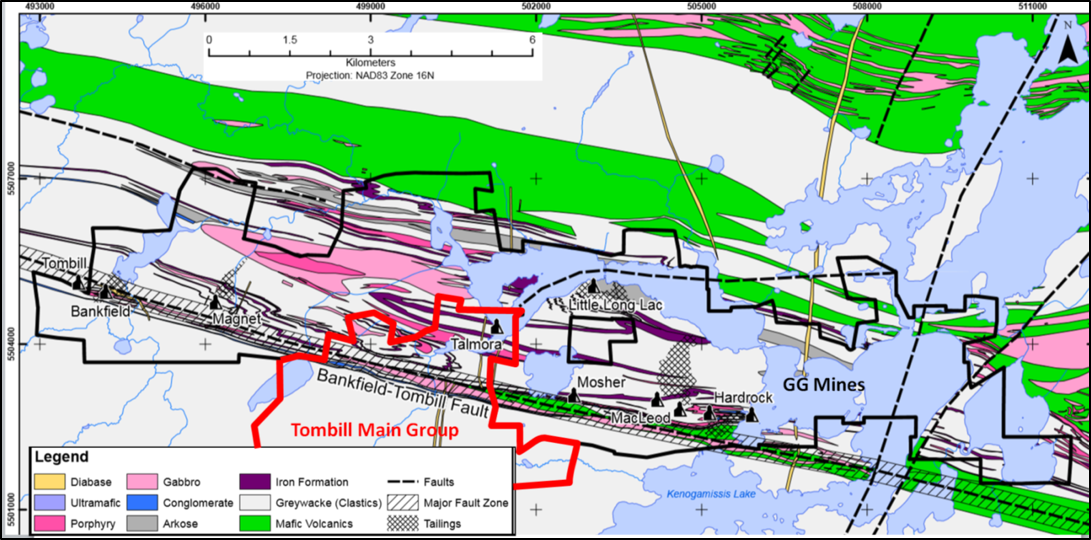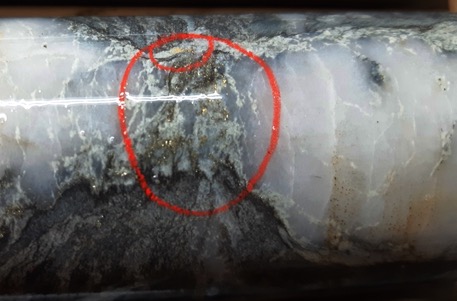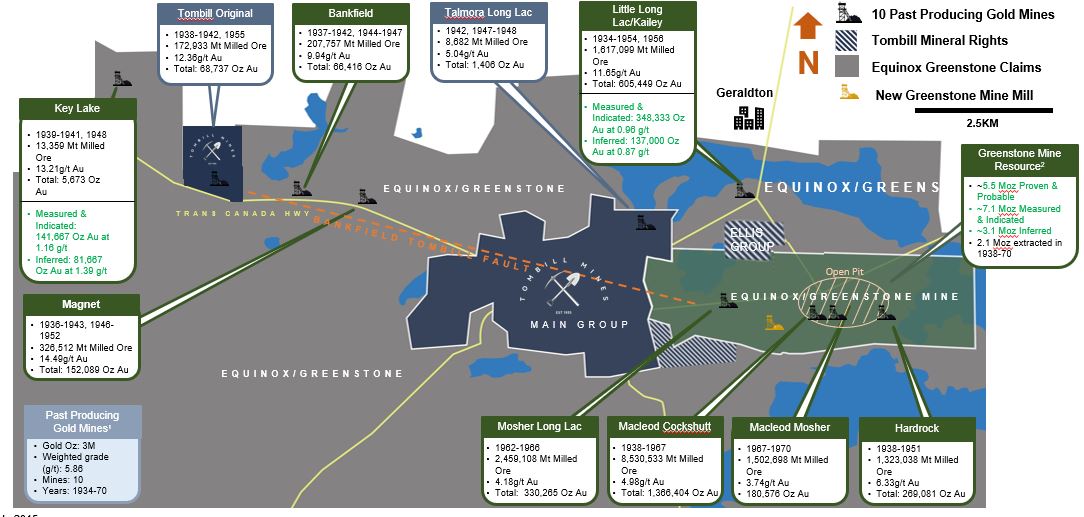Overview
The Tombill Main Group and Tombill Original Mine is located within the heart of the re-activated Geraldton Gold Camp. Tombill is a district-scale gold exploration project within wholly-owned patented mining and surface rights that are royalty-free. Tombill has not been subjected to modern exploration techniques and has a high probability for discovery of new gold deposits.
Geology
The Tombill Property is located within the Archean-aged Superior geologic Province and within that, the Wabigoon terrane. The Wabigoon terrane is a composite of volcanic-dominated domains interlayered tectonically with metasedimentary domains, with a central axis of variable-age plutonic rocks.
 Figure 1: Regional Geology of the Geraldton area (from Reddick, 2010)
Figure 1: Regional Geology of the Geraldton area (from Reddick, 2010)
Rock types within Tombill are principally clastic sediments but also volcanic rocks and igneous intrusives. The sedimentary rocks consist of greywackes, slate, magnetite iron formation, possible tuffs and volcanic breccias, as well as a basal conglomerate unit. Intrusive into the clastic and pyroclastic sedimentary rocks are hornblende diorite and albite porphyry, which are the same rock-types found on the adjacent Hardrock Project. Post-gold mineralization rocks are two diabase dykes that cross-cut all other units as shown in the figure above.
The Bankfield-Tombill Fault (BTF) is a regional deep-crustal fault up to 36 m in thickness, consisting of silicified and carbonatized rock with brittle faults. It strikes N. 75° W and dips to the south at 60 to 70° across Tombill. Most of the past-producing gold mines in the Geraldton Camp are spatially associated with this structure, The BTF is similar geometrically to deep crustal faults in other gold camps such as the Destor-Porcupine Fault in the Timmins Camp.
Mineralization
Mineralization within the Property is similar to that found within other areas in the Geraldton Gold Camp. These comprise replacement of magnetite iron formation with silica, pyrite and arsenopyrite, as well as emplacement of mineralized quartz veins containing visible gold. Historic exploration at Tombill focussed on quartz-feldspar porphyry dykes and shear zones in conglomerate both containing auriferous, narrow quartz veins.
Deep exploration drilling recently conducted within Tombill has discovered the extension of the F-Zone that was mined on the adjacent Hardrock Property presently being developed by Greenstone Gold Mines. F-Zone mineralization at Tombill consists of silicified and sericitized greywacke containing deformed quartz veins with visible gold, together with disseminated pyrite and arsenopyrite. This is the same style of F-Zone mineralization that was delineated on the adjacent Hardrock Project.
 Figure 2: Tombill drill-core containing visible gold in deformed quartz vein in F-Zone mineralization.
Figure 2: Tombill drill-core containing visible gold in deformed quartz vein in F-Zone mineralization.
Geraldton Gold Camp Past Producers 1934-1970
Limited focus historically on low grade new surface. 6 of 10 local past mines have yielded exponentially larger resources relative to past mines

